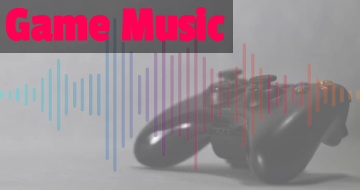IIRF Online > Music > Music Production > Game Music > Game Music Composition: Make Music For Games From Scratch
Game Music Composition: Make Music For Games From Scratch by Udemy
Learn to compose music for any and every type of video game, from complete beginner to competent game music composer
Course Highlights
- Compose high quality, original video game music for any type of game and genre, for your own game or for someone else's game.
- Start or further your career as a game music composer.
- Understand some music theory, music composition, music production and general game music knowledge.
Skills you will learn!
Curriculum
5 Topics
Promo Video
Course Overview
What You Need For This Course
How to Get Help For This Course
How to Share Your Original Game Music
6 Topics
Section 2 Introduction
Video Game Music Basics
The Composer's Thought Process
Easy Composing Methods
Section 2 Quiz
Section 2 Review Material
12 Topics
Section 3 Introduction
Installing FL Studio for Windows
Installing FL Studio for Mac
Alternatives to FL Studio
Quick Tour of FL Studio Interface
Differences between FL Studio 12 and 20
How to Input Notes Using Only Your Computer
How to Input Notes Using a MIDI Keyboard (Optional)
MIDI Keyboard Recommendations (Optional)
How to Install VST Plugins on Windows
How to Install VST Plugins on Mac
Section 3 Quiz
9 Topics
Section 4 Introduction
Plan Our Town Theme
Music Theory 1: Notes Chords and Scales
Write Our Harp Part
Write our Flute Part
Mix and Export
Share Our Town Music
Section 4 Quiz
Section 4 Review Material
23 Topics
Section 5 Introduction
Plan Our Game Character Theme
How to Get Unstuck When You're Stuck for Ideas
How to Choose Instruments that Sound Good Together
Music Theory 2: Keys Major and Minor
Write the Melody For Your Chosen Key Part 1
Write the Melody For Your Chosen Key Part 2
Write the Melody For Your Chosen Key Part 3
Editing Our Melody For Timing: Quantizing Snapping Beats Bars and Steps
Editing Our Melody For Feeling: Note Velocity
Section 5 Mid Section Quiz
How to Add Bassline and Chords to a Melody
Simple Trick in FL Studio to Help You
How to Write a Good Bassline for Your Melody
How to Build Chords from Our New Bassline
Finish the Composition and Add Drums
Mixing 1: Duplicating Tracks Technique
Mixing 2: How to Tweak Plugin Parameters
Mixing 3: How to use Equalisation to EQ your instruments
Mastering Basics: Learn the final phase of Music Production
Best Audio File Formats for Game Engines and Game Soundtracks
Section 5 End of Section Quiz
Section 5 Review Material
14 Topics
Section 6 Introduction
Introduction to 8-Bit Music
What 8-Bit Sound Do You Want?
Analyse Your 8-Bit Game Track
Quickly Plan Your Original 8-Bit Tune
Set up FL Project for 8-Bit Composing
Build the Intro
Build the Main Section
DPCM Samples in VST Plugins
Build the Cooldown
Making a True 8-Bit Sound
Pure 8-Bit Authenticity: Mixing to Mono
Section 6 Quiz
Section 6 Review Material
33 Topics
Section 7 Introduction
Adaptive Music and Non-Linearity
How to Make Adaptive and Non-Linear Music
Setup FMOD and Unity
Introduction to Vertical Orchestration Project
Music Theory 3: Tonal and Atonal Music
Write Vertical Orchestration Track 1: Peace
Write Vertical Orchestration Track 2: Restricted Area
Write Vertical Orchestration Track 3: Detected By Enemy
Write Vertical Orchestration Track 4: Conflict with Enemy
Reverb Mix and Export
Introduction to FMOD Interface
Use FMOD to make our track Non-Linear
Unity 2020 UPDATE
Create our Unity Scene
Integrate FMOD music into our Unity scene
Section 7 Mid Section Quiz
Introduction to Horizontal Re-Sequencing Project
Write Horizontal Re-Sequencing Track 1: Exploring the Field
Intro to Chaos Region and FL Studio Markers
Write Horizontal Re-Sequencing Track 2: Chaos Region
How to Compose Transition Bars
Write Horizontal Re-Sequencing Track 3: Battle Scene
Write Horizontal Re-Sequencing Track 4: Invincible State
Move our Horizontal Adaptive Music to FMOD
How to Make Perfect Transitions Between our Tracks
Design and Implement Your Transition Sequences
FMOD's AHDSR Sound Envelope
Prepare our Horizontal FMOD music for Unity Integration
Integrate Horizontal FMOD Music into Unity scene
How to Share Your Game Scene with Non-Linear Music
Section 7 End of Section Quiz
Section 7 Review Material
27 Topics
Section 8 Introduction
Introduction to Mobile Game Music
Plan our Mobile game track and Idea Jump-starting
Music Theory Revision in 5 minutes
Music Theory 4: Note Values and 4/4 Time
Music Theory 5: Dotted Notes
Music Theory 6: Time Signatures
Flesh out our Mobile Game Track Plan
Section 8 Mid Section Quiz
Compose a Motif: the Building Block of Music
Develop your Motif into a Phrase
Develop your Phrase into a Theme: 2-Phrase Checkpoint
Develop your Phrase into a Theme: 4-Phrase Checkpoint
Chord Progressions Part 1
Chord Progressions Part 2
Work out All Possible Chords for your Key
How to know WHEN to change chords
Write a Chord Progression to your Melody/Phrase
Finish your Mobile Game Compositional Sketch
Mobile Game Track Plan Development and Instrumentation
Compose your Mobile Game Track: Arranging
Compose and Arrange the Mobile track from Sketch: Phrase 1-2
Compose and Arrange the Mobile track from Sketch: Phrase 3-4
Mixing Checklist and Spectrum Analyzer
Simple Hack to Boost Final Track Volume
Section 8 End of Section Quiz
Section 8 Review Material
34 Topics
Section 9 Introduction
Characteristics of RPG Battle Vs. Boss Battle Music
Western RPG Vs. Japanese RPG Battle Music
Analysis: Final Fantasy X Battle Theme and Boss Theme
Analyse your Battle Theme vs. Boss Theme
Music Theory 7: Modes - Beyond Major and Minor
MIDI vs. Audio In Depth Comparison
Recording Audio in FL Studio
Editing Audio in FL Studio's Edison Audio Editor
Section 9 Mid Section Quiz
Plan our RPG Battle and Boss Themes
Battle Theme: Composing Melody and Bass Simultaneously
Battle Theme: Refine Melody and Bass Harmonic Framework
Battle Theme: Inner Voicings and Chords Part 1
Battle Theme: Inner Voicings and Chords Part 2
Battle Theme: Complete the Inner Harmony
Different People Compose Differently: How Notation fits into the Process
Battle Theme: Sort your Instruments
Battle Theme: Structural Breakdown - Sections and Time Stamps
Battle Theme: Structural Breakdown - Instruments and Roles
Battle Theme: Arranging and Additional Parts
Battle Theme: Arrange the Intro
Battle Theme: Arrange Main Theme Pt. 1
Battle Theme: Arrange Main Theme Pt. 2
Battle Theme: Arrange Mini Break
Battle Theme: Arrange Variation 1 Pt. 1 - Harmonise a Melody
Battle Theme: Arrange Variation 1 Pt. 2 - Modulation and Drum Kit
Battle Theme: Arrange Variation 2
Battle Theme: Arrange Break (Transition)
Battle Theme: Mixing Session 1
Battle Theme: Mixing Session 2
Preparing for Game OST
Section 9 End of Section Quiz
Section 9 Review Material
9 Topics
Section 10 Introduction
Final Course Project
Your Music Must Fulfil These Criteria
How to Compose with Modes
Publish your Final Project
Extra Challenge 1
Extra Challenge 2
Extra Challenge 3
Section 10 Review Material
4 Topics
How to Keep Your Music Interesting and Not Boring
Where to Go from Here
Section 11 Review Material
BONUS LECTURE: Continuing your Music Composition Journey

Game Music Composition: Make Music For Games From Scratch

